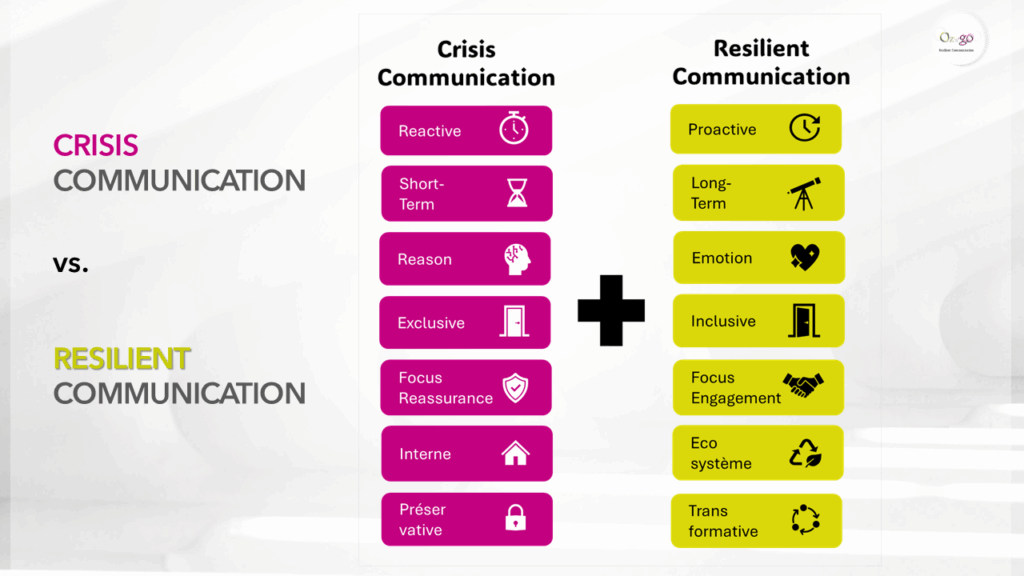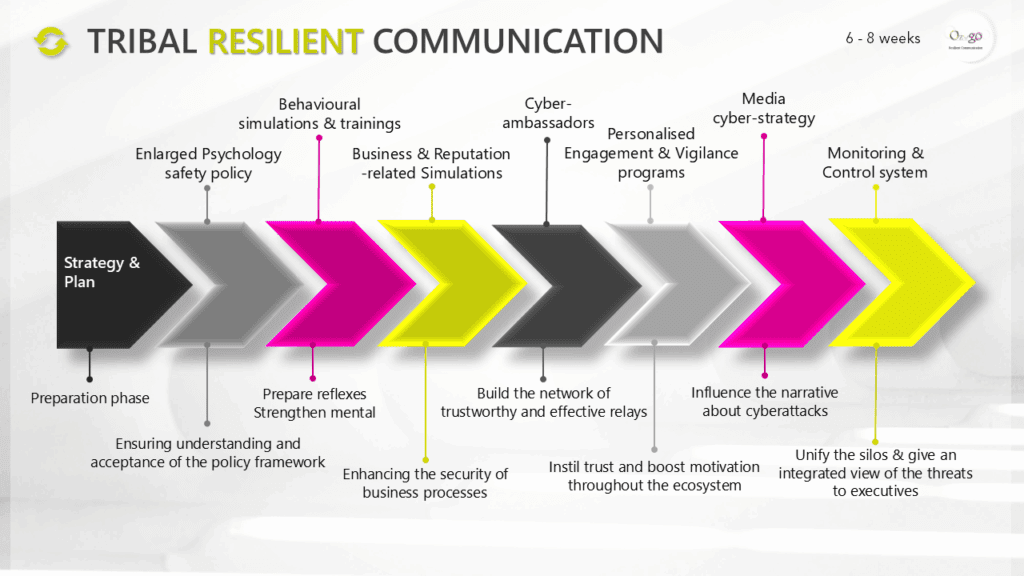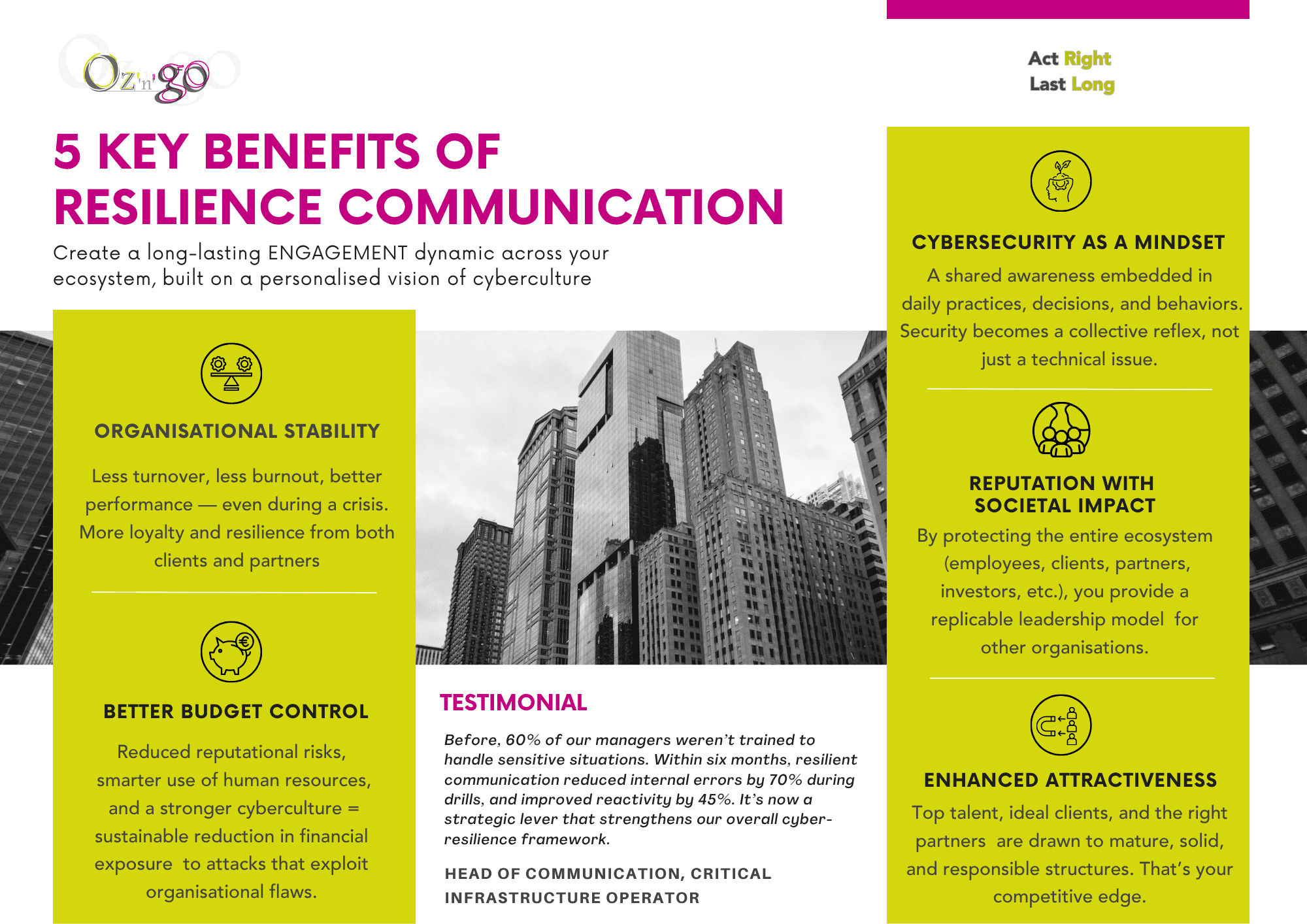Make resilience
your common language.
Foster vigilance, trust and cohesion, day after day.
Resilient Communication isn’t just a defensive position. It’s a collective reconquest.
The most dangerous cyberattacks are not always frontal. They infiltrate, manipulate… and wait.
Like in shadow wars, technical countermeasures are not enough. What is needed is a strategy of collective engagement and shared, continuous vigilance.
A vigilance that can detect weak signals, align behaviours, and uphold consistency under pressure at every level.

Unlike crisis communication, which is the weapon of choice in emergencies, resilience communication establishes a lively, human and solid position that strengthens the organisation from within and prepares the ground well before a crisis occurs.
Resilience communication translates resilience governance into action.
It gives a human face to the ability to bounce back, absorb shocks, and evolve with clarity. It is not limited to “reacting after the fact”. It builds trust beforehand, supports communication during the event, and provides meaning afterwards.
It is the voice of resilience, connecting leaders, teams, customers, and partners around a shared capacity: to stand together in uncertainty.
Laying the Foundations of a Living Culture of Resilience
Over six to eight weeks, we help you build the foundations of your resilience communication plan.
This plan is never static — it evolves with your level of maturity, your priorities, and your human and technological ecosystem.
The goal is not to apply a universal template, but to create a living culture of resilience — one that grows, adapts, and sustains collective vigilance over time.
From intention to action?
Let’s explore the next steps together.


